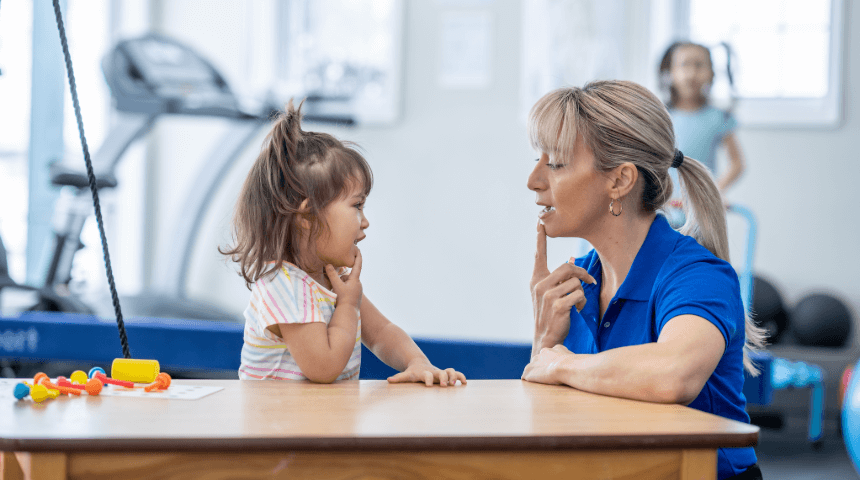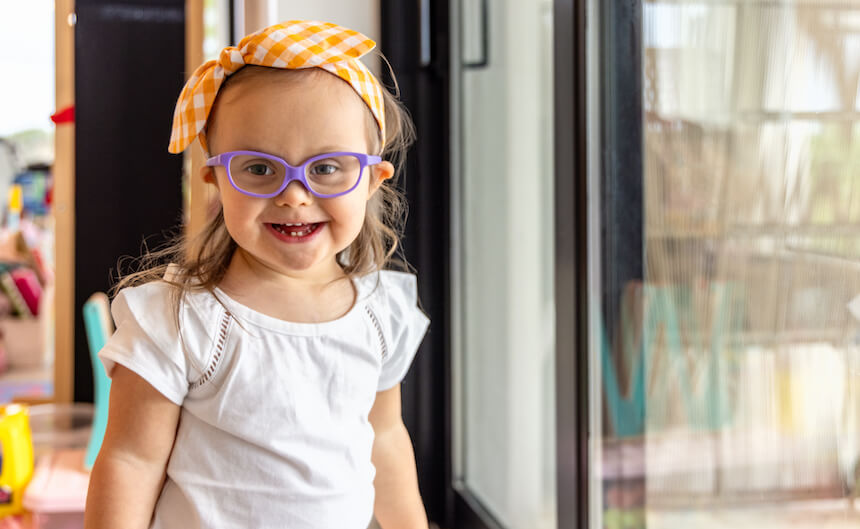Babies don’t come with a manual. But there is a list of monthly developmental milestones to help new parents navigate their child’s first year of growth.
In the 12 months from birth to their first birthday, babies learn about the strange new world around them through movement, vision, language and social play. From burbling coos and tracking movement with their eyes to uttering “Ma-ma” and toddling those first steps, these benchmarks help track a baby’s progress during this rapid-growth period.
“Parents often wonder and worry if their baby is progressing properly, so having an idea of motor skills, language and social development in the first year can be reassuring,” says Dr. Pamela Ponce, a pediatrician with Orlando Health Physician Associates.
These developmental milestones set the stage for the years to come, and parents can play a huge role in helping their baby build a strong foundation. “Mom and Dad can offer nurturing and support along the way,” says Dr. Ponce. “Cuddle time counts. So does reading, singing and simply talking to your baby.”
But milestones should only be used as a guideline. “Babies progress at their own individual pace,” says Dr. Ponce. “Some children say their first word at eight months, others don’t start talking until they are a year old. Some babies might start walking at eight or nine months while others take their first step closer to 18 months. These ranges of development are all normal. But if you notice or suspect a delay in your child’s development, do not hesitate to discuss it with your pediatrician.”
To help you keep pace as your baby transforms from nuzzling newborn to curious toddler, here’s a look at the quarterly stages of first-year development.
Months 1 Through 3
While sleeping and eating seem to consume most of their first three months of life, babies are not just laying around. They are hard at work developing and testing their senses, getting to know their parents and discovering their bodies. During this time, watch as your child begins to notice sounds, recognize faces, respond to touch and visually track moving objects.
“Your baby is trying to understand life outside the womb,” says Dr. Ponce. “Your job as a parent is to help him or her feel safe and secure in this world. You simply cannot spoil a baby, so snuggle them all you can. Your response to cries and facial expressions soothes your child and helps create a sense of security.”
- Motor Skills: Raises head, holds it up and moves it side to side; lifts chest; tightens and loosens grip; pushes up from lying down.
- Language Skills: Uses cries, squeals, coos, facial expressions and body movements to communicate needs and desires; plays with fingers.
- Social Skills: Recognizes faces, especially parents; smiles after being cuddled; may be developing a more regular eating and sleeping schedule, tracks movement with eyes.
- Fun & Games: Play finger puppets for eye contact. Help baby recognize toes with a game of “This Little Piggy.” Shake a rattle side-to-side so baby will look for the sound. Bundle up baby and go on a nature walk to experience the outdoors. Sing a favorite lullaby, gently swinging and swaying. Have silly baby conversations. Read to your baby.
Months 4 Through 6
Congrats! Your baby is no longer considered a newborn. During the second three months of life, babies become more alert; begin to babble, roll over, grab for toys; and start to sit up unsupported. It’s a time of discovery — I have feet! I have hands! I have a tiny voice! Most exciting for sleep-deprived parents? Babies are usually sleeping through the night by six months. Hurray!
- Motor Skills: Holds head steady, reaches for toys, brings hands together. Rolls over, supports self with wrists, reaches with arms. May begin to sit unsupported, transfers objects from place to place.
- Language Skills: Laughs and giggles; coos in conversation; begins to babble and blow raspberries.
- Social Skills: Enjoys looking around; turns head when hears sounds and voices, recognizes faces other than parents, giggles and laughs; reaches for parents and may cry if they are out of sight.
- Fun & Games: Read stories aloud. Make faces and watch baby imitate you. Fill a plastic bottle with rice and let baby make some noise. Hide an object and then reveal it, so baby will start to learn that things still exist when he can't see them. Play “Pattycake.” Attach favorite toys to crib and let baby reach and stretch toward them. Sing nursery rhymes and move to the rhythm. Play “Peekaboo,” taking turns “hiding” from each other.
Months 7 Through 9
It’s amazing how fast they grow! If you haven’t already done so, baby-proof your home as your curious tyke starts moving and grooving. These months not only see rapid growth in mobility, but also cognitive ability. This is also the time when parents may begin to hear mama, dada or baba.
“Babies at this stage work hard to communicate with you,” says Dr. Ponce. “They notice how conversations work. So you might notice how your child listens when you talk, waits for you to stop, then jumps in with a babbling response.”
- Motor Skills: Moves from wriggling, rolling and rocking to crawling, grabbing and pulling; sits up without help; picks up items with whole hand and transfers them back and forth; begins to perfect picking things up with a pincer grasp using pointer finger and thumb; is in constant motion — crouching, twisting, sitting, reaching and rocking while on all fours; crawls, pulls up to standing, holds bottle, throws objects.
- Language Skills: Babbles and imitates sounds, becoming chatty and using voice to express feelings such as happiness or sorrow; recognizes and responds to her name; says “mama, dada;” waves bye-bye; understands the word “no.”
- Social Skills: Begins to understand how to attract your attention; can find partially hidden objects; starts exploring surroundings; may show stranger anxiety.
- Fun & Games: To help your child create word connections, pull out the books with big, bold pictures and read aloud, pointing to the images as you repeat the word associated with it. Play “hide-and-seek” by allowing baby to see a toy, partially hiding it, then completely covering the toy from view. Put toys on sofa to encourage baby to stand up while playing. Grab a mirror to show baby his reflection and what a smile looks like.
Months 10 Through 12
Where did my baby go? As you near the end of the first year, it’s hard to believe how much this almost-walking, kinda-talking, touching-everything, tiny tot has transformed in 365 days. But while no longer an infant, she’s not quite a toddler yet. This is the time babies become goal-oriented, connecting their thoughts and actions, to let you know what they want.
- Motor Skills: Sits without support; pulls self to standing while holding onto a piece of furniture or your hand; stands unaided; creeps, crawls and cruises around room by holding furniture; may walk without assistance; uses hands to point at, poke, prod and rip things.
- Language Skills: Copies sounds and words of other; uses Mama and Dada correctly; understands simple directions; talks with intent, running unintelligible words together with tone and inflection.
- Social Skills: Recognizes noises like your voice or dog barking; finds hidden objects easily; imitates actions; comes when called; cooperates with dressing.
- Fun & Games: Position a toy just out of reach and encourage baby to crawl to it. Stack blocks for baby to knock down. Provide baby-safe finger paints and plenty of paper. Fun cause-and-effect games include pulling tissues from the box and pouring water or sand from a cup to a bowl. Offer two toys and watch baby make a choice. Always say “hi” and “bye” when interacting with friends and family. Share new places and people — but start slowly to build confidence.
If you notice or suspect a delay in your child’s development, it's important to discuss it with your pediatrician. Browse our pediatricians.










